Sample Preparation Lab(prepLab)
The Sample Preparation Facility (prepLab) is a new, high-precision sample preparation facility – located in 329 Cobleigh Hall. This facility allows preparation of ultra-high quality polished specimens for SEM, TEM, EDX, nano-Auger, EBSD and other microbeam analysis requiring flat, smooth, and damage-free surfaces.
For the Sample Preparation Lab click here.
Current Instrumentation
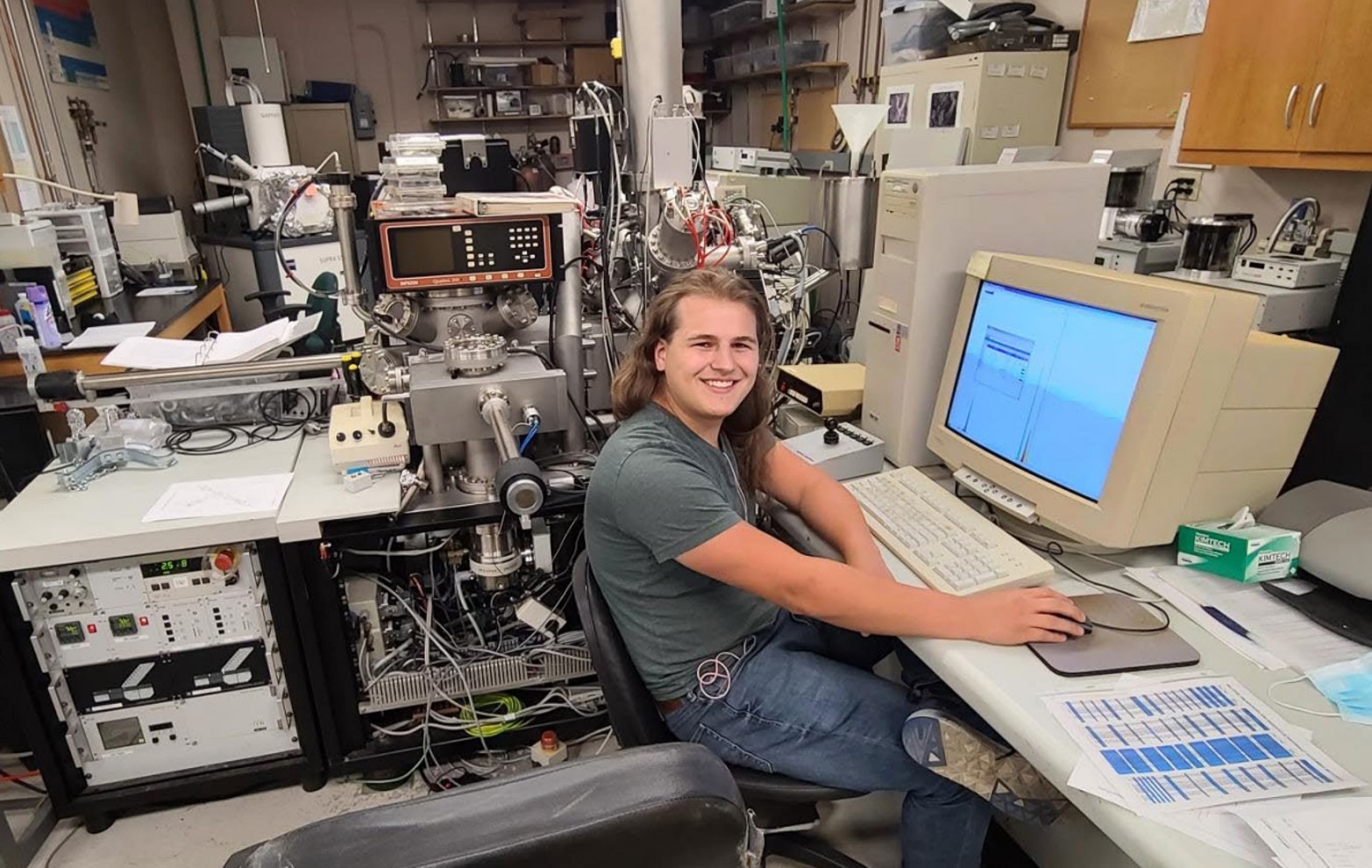
Time-of-Flight Secondary Ion Mass Spectrometer (ToF-SIMS)
IONTOF GmbH, model IV
- Mass resolution of 0.00x amu and spatial resolution of approx. 1 µm
- Mass range of 0-10,000 amu
- Trace element detection limits in ppm range
- Seamless positive and negative ion imaging modes
- Large sample loading area can accommodate up to 8-inch wafers
- Sub-micron imaging to map any mass number of interest
- Allows retrospective analysis with data cube giving full mass spectrum from every pixel
Manufacturer's website:
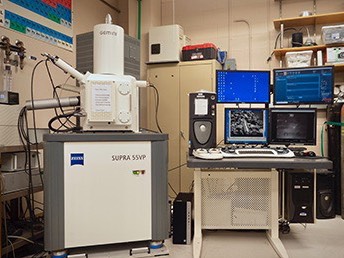
Field Emission Scanning Electron Microscopes (FE SEM)
Zeiss SUPRA 55VP and Zeiss Ultra 55
- Dual FE-SEMs to give in-depth analysis of varied samples from biological to geological systems
- Ultra-high resolution at low accelerating voltage to allow nanometer scale imaging
- Large area and fast EBSD and EDS mapping with state-of-the art Oxford Detectors (Symmetry and Ultim Max, respectively).
- Electron beam lithography capability
- Variable pressure and high vacuum modes available
- Large volume sample analysis chamber
- Backscatter and secondary electron imaging and InLens detector
- Cathodoluminescence imaging with state-of-the-art Delmic system
Manufacturers' websites:
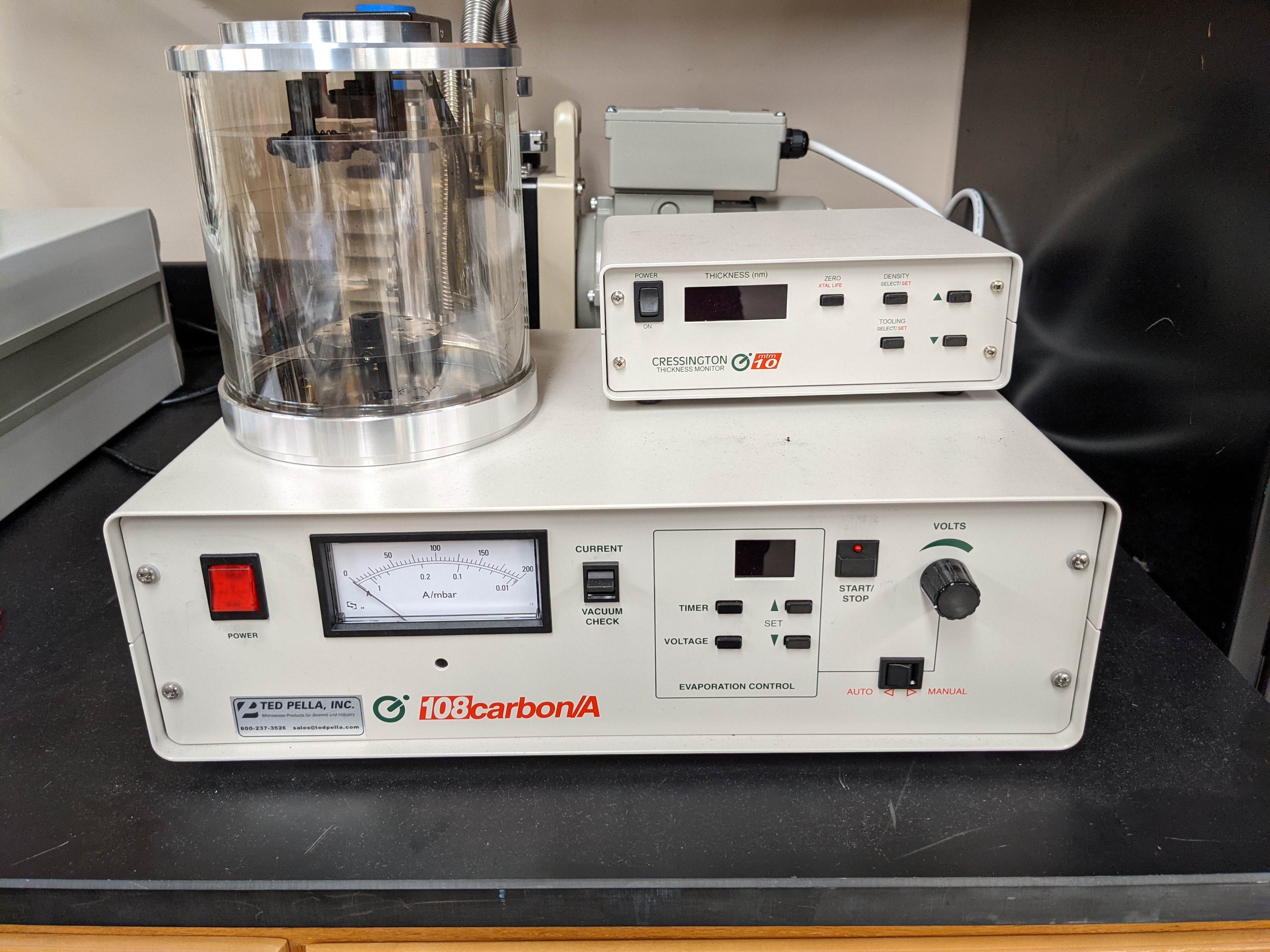
Pella Carbon Coater for SEM sample prep
108 Carbon Coater
- High quality desktop vacuum coating systems
- 108 series sputter coaters for standard SEM and EDS sample coating
- Its dedicated thickness measurement system offers tight controls to create the desired coating thickness
- Better and more uniform coating on topographic samples
- Easy to use
- MORE INFORMATION »

Bruker D8 Advance Powder X-ray Diffractometer
D8 Advance
- Features a unique D8 diffractometer family platform, perfect for all X-ray powder diffraction and scattering application
- In addition, there is a pair distribution function for analysis
- The D8 Advance is also adaptable in its measuring and can measure any sample type from liquids, gases, loose powders, and thin films
- MORE INFORMATION »
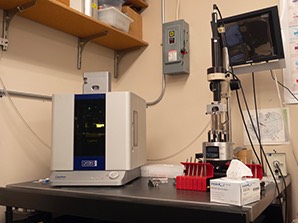
Atomic Force Microscope (AFM)
VEECO MultiMode V and Dimension 3100
- Imaging of conducting and non-conducting surfaces
- Sub-nanometer resolution
- Imaging in air and liquid, allowing in-situ measurements and real time imaging of biological and chemical processes
- AFM can be used to measure and localize many different forces including: adhesion strength, magnetic forces and mechanical properties
- True 3D imaging and measurements
- Magnetic, friction, chemical, and phase imaging
- MORE INFORMATION »
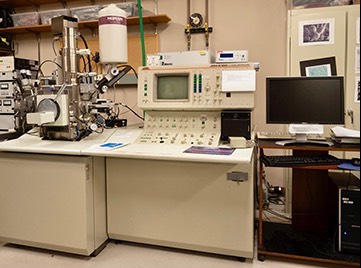
Scanning Electron Microscope (SEM)
- Secondary Electron Imaging (SEI)
- Backscattered Electron Imaging (BEI)
- Cathodo-Luminescence detection and imaging (CL)
- Energy Dispersive x-ray Spectroscopy (X-Flash fast X-ray mapping detector)
- Cryo-preparation chamber with cold / hot stage
- High-resolution imaging
- Digital image capture
- Quantitative elemental analysis of the "bulk" material
- Fast elemental mapping and / or linescan of area of interest
- Topographical and density imaging
- Detection of small variations of trace element content
- Analysis and Imaging of samples in their natural, hydrated state
- MORE INFORMATION »
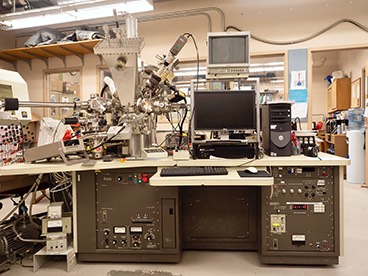
X-ray Photoelectron Spectrometer (XPS)
- Elemental identification and quantification
- Chemical functional group identification and quantification
- Chemical state imaging
- Surface sensitivity
- Layer-by-layer depth profiling
- Minimal sample damage
- Analysis of insulating and conducting samples
- Data collection / stage automation
- Cold stage
- MORE INFORMATION »
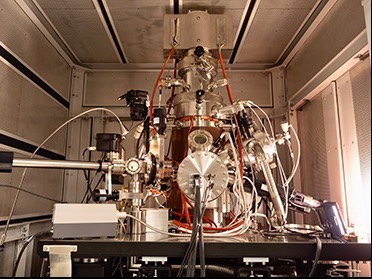
Scanning Auger Electron Nanoprobe (AUGER)
- Rapid sample introduction
- Low-Z elemental detection
- Quantitative analysis, mapping, linescan for AES and EDS
- Surface sensitivity of 1-5 nm
- Enhanced lateral spatial resolution for elemental analysis (<8 nm with a 20kV, 1nA electron beam )
- Limited chemical information
- Sputter depth profiling (three dimensional analysis)
- High resolution secondary electron imaging of analysis area
- MORE INFORMATION »
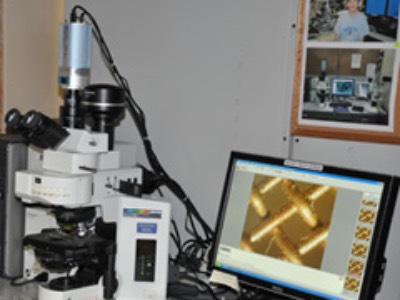
Epifluorescence Optical Microscope
- Precision objectives including air, oil and water immersion objectives
- Suite of reflected (fluorescent) filters (DAPI, FITC/CY2, TRITC/CY3, triple band and RBF)
- Significantly reduced autofluorescence and signal-to-noise ratio
- DIC imaging (10x, 20x, 40x, 60x)
- Digital camera imaging for still and time-lapse observations
- MORE INFORMATION »
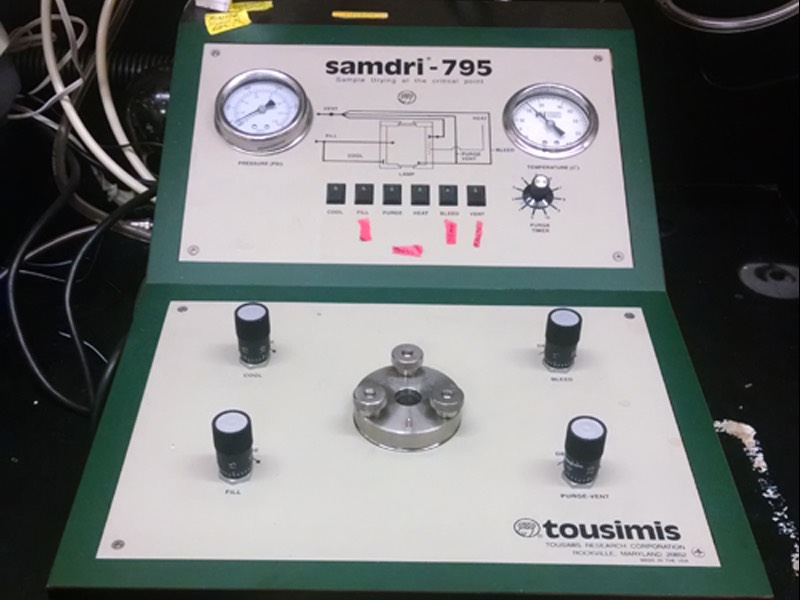
Critical Point Dryer (CPD)
- Alternative to air drying for vacuum samples
- Reduces imaging artifacts
- Uses liquid CO2
- MORE INFORMATION »
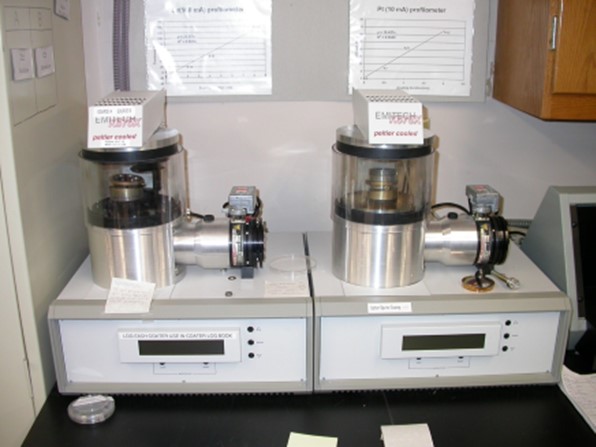
Metal Coaters for SEM sample prep
- For sputter coating samples for SEM prep with metal conductive layer
- Two coaters: Dual source and dedicated source with interchangeable metal targets
- Dual source coater can provide alternating metal layers
- Adjustable current and time settings to give controlled layer thicknesses of 10-20 nm
- Available targets are iridium, gold, silver, platinum, and gold palladium to different applications
Manufacturer's website:

Video Contact Angle System
- Provides contact angle measurement
- Determines surface energy
- Hydrophilicity/hydrophobicity of surfaces
- Gives information on surface cleanliness, roughness, etc.
Manufacturer's website:
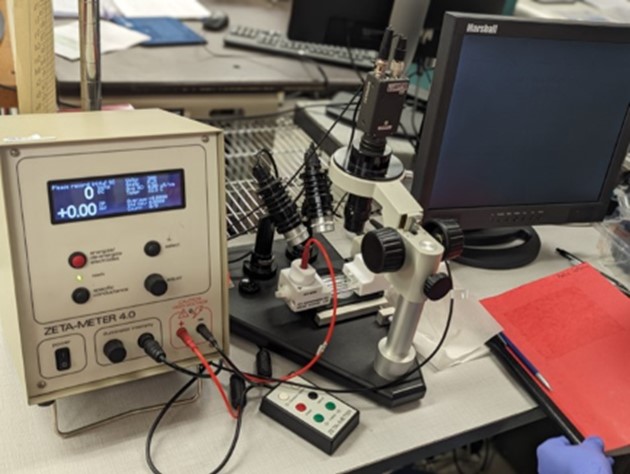
Zeta Potential Meter
- Provides indirect measure of the net charge on a nanoparticle
- Zeta potential values are determined via electrophoretic mobility measurements
- Obtains zeta potential values of nanoparticles in aqueous solution
- Gives criteria for the tendency of particles to flocculate (aggregate)
Manufacturer's website:
